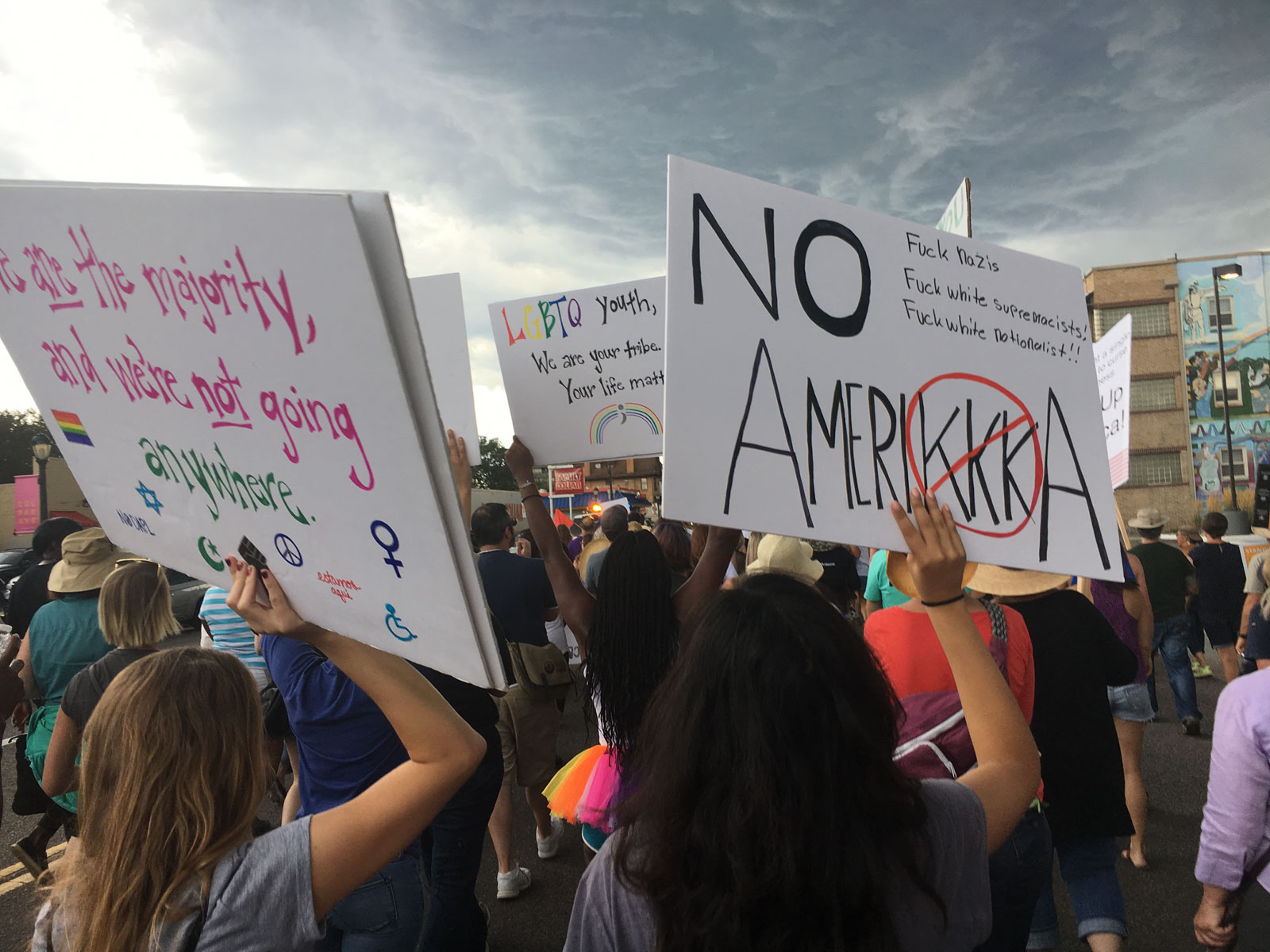The Local newsletter is your free, daily guide to life in Colorado. For locals, by locals.
Six months into President Donald Trump’s administration, protests (and counterprotests) to his policies and agenda are only increasing, and Denver is taking a leading role in the resistance.
Over the weekend, violence erupted in Charlottesville, Virginia, as a group of so-called white nationalists descended upon the college town for a planned “Unite the Right” rally. On Saturday, one person was killed and more than a dozen were injured when a man drove his vehicle into a crowd of counterprotesters.

While the disorder witnessed in Charlottesville isn’t uncommon in our national history of political protests, University of Denver professor Erica Chenoweth says that nonviolent mass mobilization is traditionally a more powerful way to create lasting change.
An international expert in political violence and civil resistance, Chenoweth and her colleague Maria J. Stephan conducted research using global data that spans more than 100 years for their book, Why Civil Resistance Works. They found that nonviolent movements are nearly twice as effective at achieving transformational social and political change as campaigns that turn violent. The reason? Nonviolent resistance not only appeals to the moral goodness of political leaders, but also encourages large numbers of people from diverse backgrounds to participate.
On January 21, the day after Trump’s inauguration, the Women’s March successfully mobilized enough protesters to become the largest single-day demonstration recorded in the U.S., with more than 4 million Americans taking to the streets in cities across the country. It was also largely nonviolent, with no arrests or physical clashes reported.
Chenoweth—along with Jeremy Pressman, an associate professor of political science and director of Middle East studies at the University of Connecticut—began tracking protest participation during the Women’s March for a public interest project called the Crowd Counting Consortium (CCC). Since then, they’ve continued to collect data on organized demonstrations throughout the U.S.
What’s notable about the Women’s March, according to Chenoweth’s data, is that about 25 marches in Colorado drew more than 160,000 demonstrators, or nearly three percent of the state’s population (compared to about one percent nationwide). According to Chenoweth, nonviolent campaigns that reach a threshold of three-and-a-half percent of the population succeed in their missions 100 percent of the time—not necessarily by changing minds, but by forcing political leaders to be held accountable to those who they represent. Successful nonviolent campaigns throughout history include women’s suffrage, the Civil Rights movement, and ending the exploitation of farm workers.
Today’s resistance movement isn’t showing any signs of slowing down. According to Chenoweth’s research, more Americans protested in June than in any month since the Women’s Marches. About one million Americans showed up to more than 8oo protests, demonstrations, marches, and rallies in every state in June, for causes as diverse as LGBTQ equality, the Russia investigation, healthcare, and even a Rally4Trains to protest budget cuts to Amtrak. About 65 percent of the protests were opposed to Trump’s policies, 7 percent were pro-Trump, and 27 percent were neither for nor against Trump, says Chenoweth. Only one percent of the protests included violence.
“I have never seen as much sustained mobilization as we are now seeing,” Chenoweth says.
Locally, Indivisible Front Range Resistance (IFRR), has been focusing most of its attention on Republican Sen. Cory Gardner, says Katie Farnan, IFRR’s steering committee leader. “We’re holding the ones in power to account,” she says.
Frustrated with a lack of in-person town halls, the group, which Farnan says has about 200 active participants, took “Cardboard Cory” cutouts to farmer’s markets, fairs, and other statewide events to protest Gardner’s lack of accessibility. The demonstrations seem to have worked: Gardner is holding three town halls across the Front Range on Tuesday in Colorado Springs, Greeley, and Lakewood—his first solo events since March 2016.
While every protest or demonstration has its own focus and goal, some local efforts have succeeded in gaining national attention. For example, 10 protesters, many of whom were disabled, were arrested in June after a 58-hour sit-in at Sen. Gardner’s Denver office. The protesters, organized by ADAPT, a national disability rights organization started in Colorado, were gathered to express opposition to the GOP’s plan to repeal and replace the Affordable Care Act. Each version of the bill failed in the Senate.
“There has just been this incredible volunteerism in a city where people want to be engaged,” says Chenoweth.
On Sunday, thousands of Coloradans responded to the violence in Charlottesville with a peaceful rally in Denver’s City Park that connected the outcry over white nationalism to local issues like immigration. “Historically, almost all nonviolent mass movements that have seriously challenged the status quo have faced lethal violence,” Chenoweth says. “Those that have succeeded generally find ways to expand the number and diversity of committed participants in the aftermath of the violence.”
Chenoweth’s data shows the average nonviolent campaign takes about three years to run its course, which could potentially carry the current resistance movement into the 2020 presidential election year. “Real nonviolent resistance isn’t about a single day protest that raises a lot of eyebrows,” Chenoweth says. “It’s actually about staying power and having a set of messages laid out in a strategic way, where you are continually building capacity and expanding your participation.”








